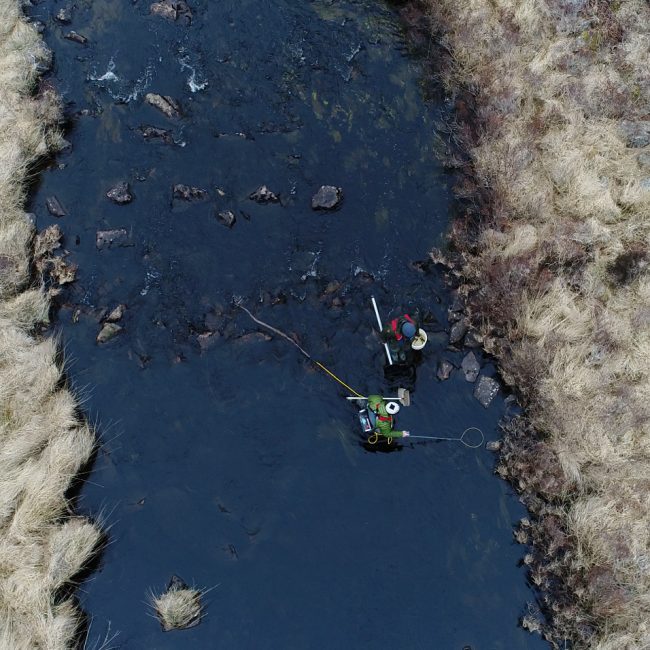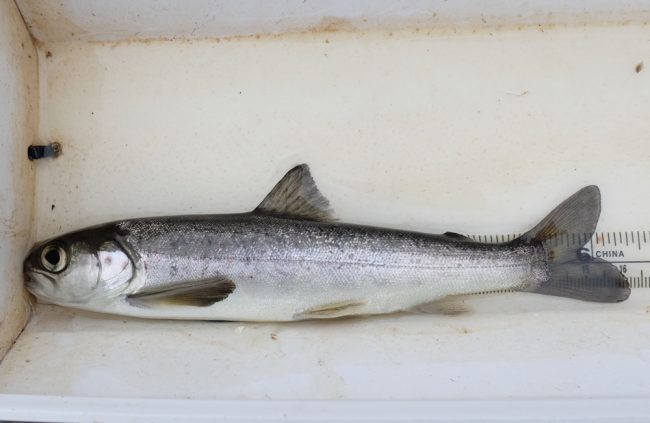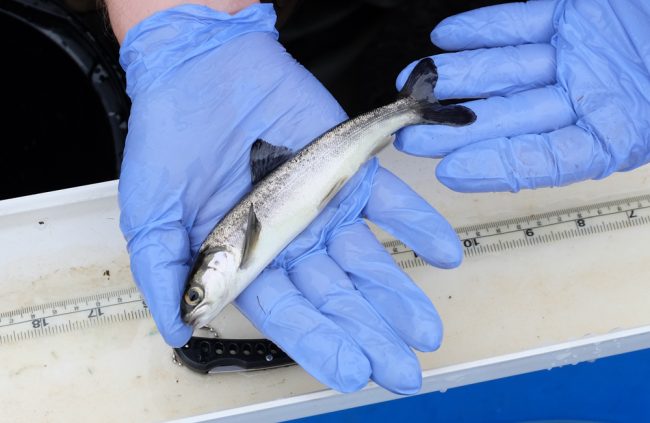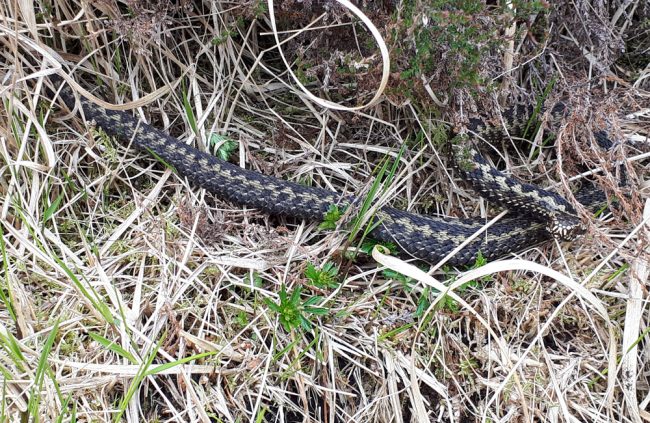
As part of the work we are doing at Loch Doon to assess the migration of salmon through the loch and fish pass, we were there again this week setting a fyke net trap and performing some electrofishing to secure a representative sample of what’s there.
This research will inform management of how to improve the fish pass in the dam (if that’s necessary) or at least highlight problems that smolts have in making their way downstream.
Struan took the electrofishing back pack under the close supervision of Muir and myself as he start the process of learning the requirements for the team leader. Despite having been with the trust biologists for around 10 years on and off, he still has a bit to learn about surveys and survey design before he sits the assessment in September this year so now the time to learn. Maintaining standards is important and what the Trust strive for in all our work.

Struan and muir electrofishing the Garpel Lane
We managed to secure a few smolts with the electrofishing equipment and expect the trap to start picking up more fish in the next couple of weeks as they begin to move. Some fish were well developed while other were still in the early stages of smoltification. These fish have been adipose clipped to allow easy identification in future but more importantly, these are all wild fish that we are working with and despite it being a very small population, we hope to allow it to continue as a wild population without any hatchery intervention.

A smolt about ready for it’s long journey

The largest smolt we captured and almost certainly an S3. It’s a bit lean but that’s not necessarily surprising in such a low productivity water. We will confirm its age from the scale samples we collected.
This population may see the benefit of our work once completed as it’s managed to hold on largely unaided for years. Solving migration and habitat issues rather than the common and often first choice of stocking, has to be far more beneficial in the long run for our salmon.
While in the area, we also took the opportunity to have a look at the Finlas dam where there’s no fish ladder. Upstream of this dam, Loch Finlas is supplied from the Derclach Loch and several small feeder burns so we also took the opportunity to have a quick look at them to assess their spawning potential. Having a quick look at anything in this habitat isn’t easy as it’s difficult to walk and vehicular access is virtually nil so we managed this with the quadcopter. Equipped with the latest high resolution (4K) camera, we quickly flew to the two main burns feeding the loch. The next time we are in the area will will do this again and check the infall from Derclach too but we were limited by our available battery power yesterday.
This area is a stronghold for adders in Ayrshire and I came across (almost stepped on) this one while keeping an eye out for them.

This adder was lying on the surface just below a clump of heather, presumably getting a bit of warmth from the faint glimpses of sun
Wile there with the quadcopter, we also too the opportunity to fly the Garpel from Loch Doon to Loch Finlas and the video can be seen by following this link. https://www.youtube.com/watch?v=6F-usJPVxWg&t=15s
I hope you enjoy this wee video. We intend to take many more of our rivers over the coming months for all to enjoy. There will be a dedicated video’s section on the new website when it’s launched.
Source: Ayshire River Trust – Loch Doon smolt monitoring
